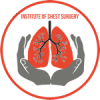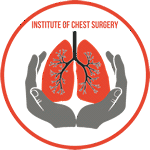Lung nodules are small, round or oval-shaped growths that appear as spots on the lungs when detected on imaging tests such as chest X-rays or CT scans. These nodules are commonly found during routine medical check-ups or while investigating other health concerns. The discovery of lung nodules can be a cause for concern, prompting patients to wonder, “What are lung nodules, and do they require treatment?” In this comprehensive blog post, we will explore what lung nodules are, their potential causes, and whether they necessitate medical intervention.
Understanding Lung Nodules
1. Defining Lung Nodules
Lung nodules, also known as pulmonary nodules or coin lesions, are small masses that measure less than 3 centimeters (approximately 1.2 inches) in diameter. They can be solitary or multiple and are typically discovered incidentally during medical imaging.
2. Types of Lung Nodules
Lung nodules can be classified into two main categories based on their appearance and potential implications:
- Benign Lung Nodules: These nodules are non-cancerous and often caused by harmless conditions like infections, inflammation, or scarring.
- Malignant Lung Nodules: Malignant nodules, on the other hand, are cancerous and may indicate the presence of primary lung cancer or metastases from cancer originating in other parts of the body.
3. Causes of Lung Nodules
The causes of lung nodules can vary and are often related to certain risk factors:
- Infections: Bacterial, viral, or fungal infections can lead to the development of lung nodules.
- Inflammation: Chronic inflammatory conditions such as rheumatoid arthritis or sarcoidosis may contribute to the formation of nodules.
- Benign Tumors: Non-cancerous growths, such as hamartomas, can result in lung nodules.
- Malignant Tumors: Lung nodules can be an early sign of lung cancer or metastases from other cancer types.
- Environmental Exposures: Exposure to certain substances like asbestos or radiation may increase the risk of developing nodules.
Treatment Considerations for Lung Nodules
1. Benign Lung Nodules
The management of benign lung nodules varies depending on their size, appearance, and underlying cause:
- Monitoring: Smaller, stable nodules with a low risk of malignancy may only require periodic monitoring through follow-up imaging tests.
- Medication: In cases where infections or inflammatory conditions cause the nodules, appropriate medications can be prescribed to address the underlying issue.
- Biopsy or Resection: If a benign nodule exhibits concerning features or continues to grow, a biopsy or surgical resection may be recommended for accurate diagnosis and to rule out malignancy.
2. Malignant Lung Nodules
Malignant lung nodules require prompt evaluation and a comprehensive treatment plan:
- Biopsy: To determine whether the nodule is cancerous and, if so, the specific type of cancer, a biopsy is usually performed.
- Staging: If lung cancer is confirmed, further tests are conducted to determine the stage and extent of the disease, which guides the treatment approach.
- Treatment Options: Depending on the stage and type of lung cancer, treatment options may include surgery, chemotherapy, radiation therapy, targeted therapy, immunotherapy, or a combination of these modalities.
- Precision Medicine: Advancements in precision medicine allow for personalized treatment plans based on the tumor’s genetic profile, optimizing therapeutic outcomes.
3. Lifestyle and Prevention
While some lung nodules are beyond our control, certain lifestyle modifications can help reduce the risk of developing lung nodules and associated complications:
- Quit Smoking: Smoking cessation is the most effective way to prevent lung nodules and reduce the risk of lung cancer.
- Protect from Environmental Hazards: Minimize exposure to environmental toxins, such as asbestos, radon, or other hazardous substances.
- Healthy Diet and Exercise: Adopting a balanced diet and engaging in regular physical activity can contribute to overall lung health.
Conclusion
Lung nodules are relatively common findings on medical imaging tests, and their significance depends on factors such as size, appearance, and underlying cause. While benign lung nodules may only require monitoring or targeted treatment for the underlying condition, malignant nodules demand immediate attention and a comprehensive treatment approach.







